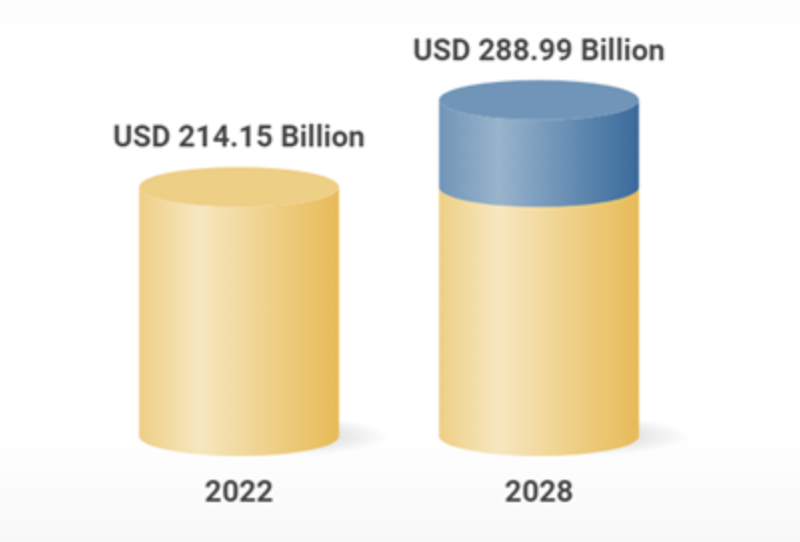
Global flex-pack market to approach $290 billion in 2028, up 5.1% CAGR, says new study
February 12, 2023The global flexible-packaging market is expected to grow at 5.12% CAGR to 2028, says a new Research And Markets report.
In the aftermath of COVID-19, the flexible-packaging market witnessed supply-chain disruptions because of a voluntary shutdown of factories or authorities enforcing lockdown. In some cases, though, the workforce at the supplier location had been reduced to ensure a certain amount of work was carried out to deliver smaller batches of materials required at the converter’s site.
The high prices of premium categories of F&B products are expected to be majorly impacted, while the reasonably priced essential F&B products are expected to see higher demand. In Italy, the post-COVID-19 situation prompted the packaging vendors to reassess and revisit their inventories. The packaging vendors have re-strategized their supply chain by reducing dependence on cross-border suppliers as there exists a fear of trade route blockade.
As some end-use applications have flourished, the demand for flexible packaging has been affected due to less consumption. Medicines, dairy products, food, sanitizers, face masks, disinfectants, and others have been in high demand. These products also require packaging, particularly flexibles, thereby increasing demand for flex packs in the market.
Increased Adoption Of Flexible Packaging Over Rigid Packaging
Major influencing factors in the global flexible-packaging market include the cost of raw materials, lesser cost of production, and lightweight nature. Further, the demand from buyers and end customers is compelling the shift to flexible packaging. The advent of smaller packs and single-serve packaging has resulted in more packages of lesser volume in 2020 and during COVID-19.
The flexible packaging market also offers easy-to-use caps and closure functionalities that were previously one of the reasons for slower adoption rates. Flexible pouches have become the most sought-after product as they can package products belonging to food, pharma, beverages, FMCG, and others. Also, other flexible-packaging products, such as aluminum foil and paper, have expanded their scope with many variations. Also, the newer retort packages with increased protection features from the external environment, combined with functionalities such as zips and spouts, are increasing the adoption of pouch packaging and, in turn, flexible packaging over rigid packaging. Hence, a greater number of products that were earlier packaged in rigid materials are flexible adoption packaging.
Use
of High-Barrier Plastic Packaging Materials
The barrier properties of films used in plastic packaging are important as it ensures that the food is not spoiled and shelf life is increased. The advent of thinner packaging materials leads to a requirement for high-barrier properties. These barrier properties include the permeability of gases, water vapor, aroma compounds, and light. The polymers used in these plastic films are the essential differentiating factor for the efficacy of such barrier films in maintaining the quality of packaged or processed foods.
The flexible plastic packaging market widely uses high-barrier films for premium food protection. The lightweight nature and flexibility of flexible packaging using these high-barrier films replace traditional packaging materials such as metal, rigid plastic, and glass. With the growing demand for high-barrier packaging, especially in the vacuum packaging market due to its cost-effectiveness and efficiency, recyclable high-barrier plastics such as stand-up pouches are preferred. Moreover, rising awareness of eco-friendly and convenient packaging in the food industry is also expected to increase the demand for high-barrier vacuum packaging in the flexible packaging market.
